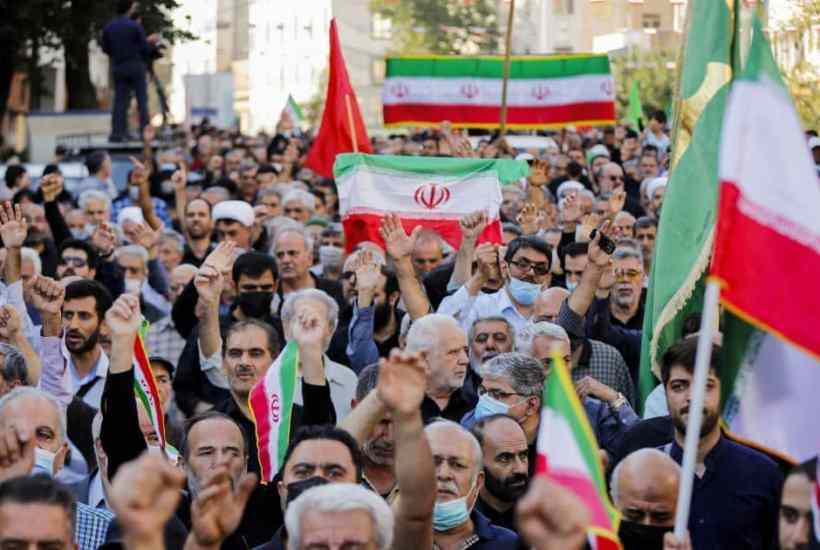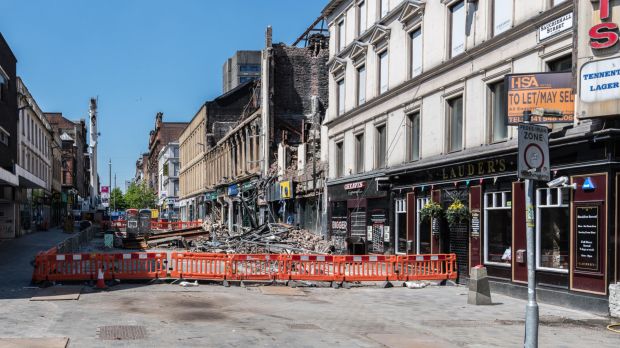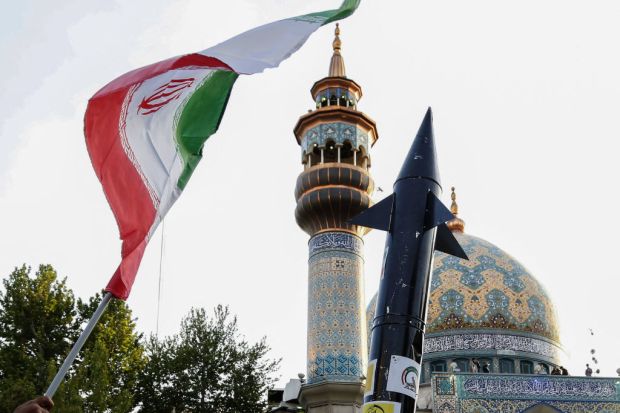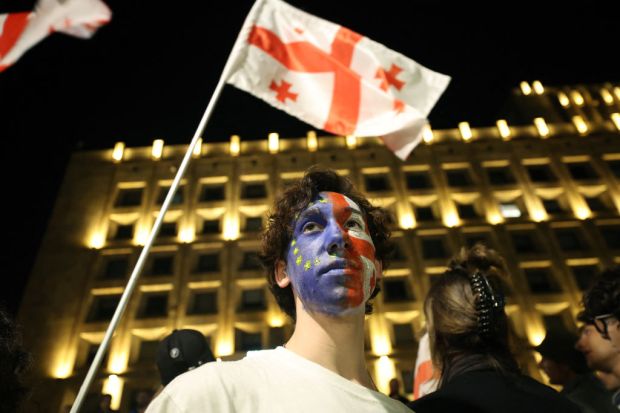Iran’s protestors are showing immense courage. That is a given. But the reasons why are worth spelling out.
Not only do they have the bravery to demonstrate against a theocratic dictatorship which has veiled women against their will for over forty years; they also protest in the full knowledge that the regime has already killed many thousands of activists in Iran and across the Middle East.
The protestors face a leviathan. They are up against the very heart of an expansionist empire.
From the very beginning, the leaders of Iran’s Islamic Revolution, which took power in 1979, conceived of their mission as a world-wide one. It was their job to spread the faith – a particularly aggressive version of Shia Islam – across the region. And woe to their enemies: Israel, Britain, the United States, the Sunni Arab monarchies, and much of the rest of the world.
The backbone of this permanent revolution is the Islamic Revolutionary Guards Corps (IRGC) – a formidable reactionary force within Iran, and a deep threat to the enemies of the revolution worldwide. Within years of the revolution, Iran’s IRGC unified Shia militias and terrorist groups across the Middle East to create new forces under Iranian leadership. One of those was Hezbollah – the army of God – in Lebanon, founded between 1979 and 1982.
Hezbollah is now a pillar of the Lebanese state, but it is first and foremost a terrorist army. Its cadres are happiest fighting in Syria’s civil war, murdering dissident journalists and politicians, and attacking Israel with drones, missiles and bombs.
Between then and now, Iran established or co-opted insurgent militias across the region. Many of them were made and unified in Iraq after the overthrow of Saddam Hussein. Others took root in Yemen, Syria, and elsewhere.
This regional project is so vast that for years, it was considered impossible. Americans and others thought that Iran was too weak and badly governed to build an empire. And that although terrorist movements across the region may share a loose connection to militant Shia Islam, there could be no coordination between them.
This has proven false. As Iran’s empire grew, so did its audacity. The late Qassem Soleimani, leader of the IRGC – Quds Force (which specialises in foreign operations), achieved the dubious transformation from underground general to international celebrity.
He fought in wars across the region – directing Hezbollah and the Assad regime in battle in Syria, coordinating tens of thousands of militiamen within Iraq – and finally being killed by the United States, who subsequently declared Soleimani the world’s most dangerous terrorist. Now Soleimani’s successors smilingly pose with the flags of Iran’s terrorist proxies.
Soleimani spent much of his last years killing protestors. In Syria, he fought against all threats to the regime of Bashar al-Assad. He directed Iran’s proxies to murder protestors in Iraq. Even after Soleimani’s death, 2020 was a year of assassinations and mass-murder in Iraq by Iranian militias.
Influential people were hunted down and shot. Protest leaders were targeted by snipers in Baghdad, and assassination squads in Basra. Meanwhile, Iran’s people were forgotten in this campaign of death.
Revolutionary fervour does not lead to good economics. Iran’s leaders did nothing to stop the nuclear programme that has levied heavy sanctions against the country.
As Iran’s leaders pursued their fevered regional project, they neglected the people at home. Many billions of dollars of state funding disappeared into IRGC hands, and was then used to blow up checkpoints in Baghdad and hurl missiles at Israel, rather than to build infrastructure in rural Iran.
Most previous mass protest movements in Iran have come at times of economic hardship or stolen elections. The most recent economic protest was caused by a fuel crisis in 2019. Rather than assuage the people, the state opened fire, killing – and this is a conservative figure – 1,500 of them.
The regional empire has nothing to do with Iran’s people. They don’t want it. It does not bring them pride or wealth. Only their leaders in the clericy and the IRGC care for these things.
The new protests in Iran are partially fuelled by the popular aversion to regional empire. Demonstrators have torched IRGC buildings across the country, and denounced a leadership in the language it demands they use to call for the destruction of Israel and America.
If the protests succeed, Iran’s regional empire may well collapse. It is built on the finances which Iran’s people consider rightfully theirs. They don’t share the regime’s appetite for terrorism.
And this is why the protestors deserve our admiration. They know that the violence they face was pioneered abroad. Just as Iranian-allied militias grew bolder and more violent in foreign countries, they developed the tactics of killing demonstrators and repressing protests which are now being used, against demonstrations, in Iran proper.
It is hard to know how many protestors in Iran have already been murdered by these same tactics. But the protestors knew that is what they faced, and, nonetheless, still they took to the streets to denounce their government.
Got something to add? Join the discussion and comment below.
Get 10 issues for just $10
Subscribe to The Spectator Australia today for the next 10 magazine issues, plus full online access, for just $10.



















Comments
Don't miss out
Join the conversation with other Spectator Australia readers. Subscribe to leave a comment.
SUBSCRIBEAlready a subscriber? Log in